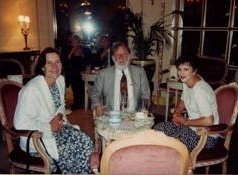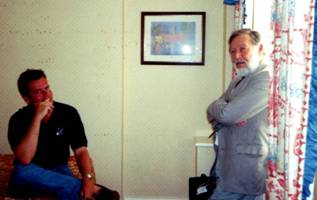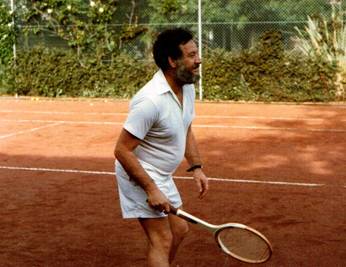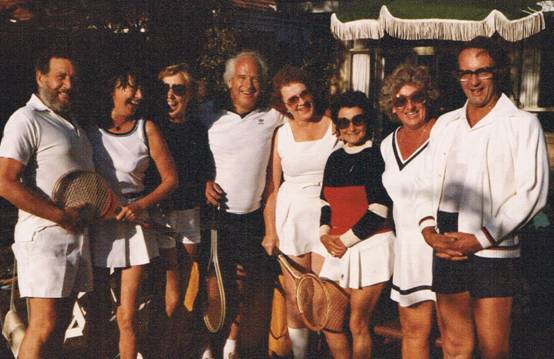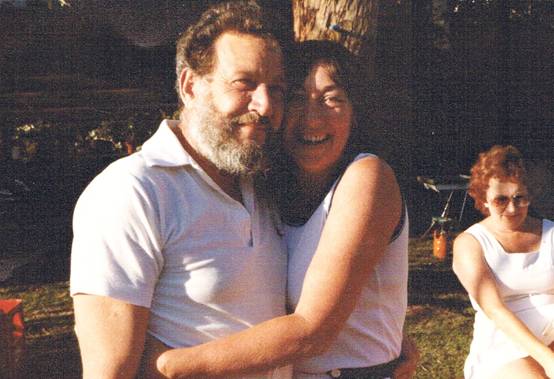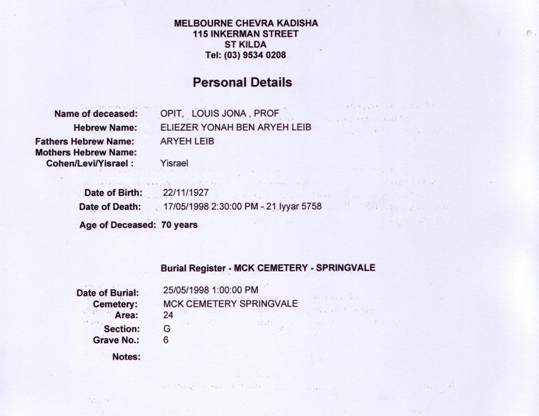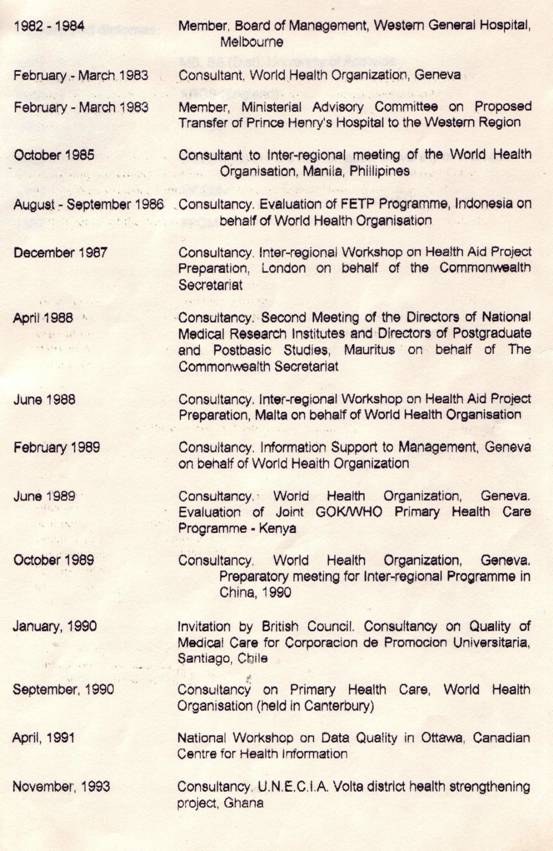
South Australian Medical Heritage Society Inc
Website for the Virtual Museum
Home
Coming meetings
Past meetings
About the Society
Main Galleries
Medicine
Surgery
Anaesthesia
X-rays
Hospitals,other organisations
Individuals of note
Small Galleries
Ethnic medicine
- Aboriginal
- Chinese
- Mediterran
EMERITUS PROFESSOR LOUIS JONAH OPIT:
FRCS, FRACS, BSc (Hons), MFCM, FFCM, 1927 –1998SURGEON, BIOCHEMIST, MATHEMATICIAN AND
EMERITUS PROFESSOR OF COMMUNITY MEDICINE.Acknowledgments:
Emeritus Professor Donald Simpson kindly suggested the topic. He knew Lou Opit at school, as a medical student and later as an admired colleague. He provided valuable information about his father Leon, Lou Opit’s character and made us speculate on Lou Opit’s career changes.
Drs. Michael Hamilton and Alan Rose provided their recollections and photographs
Professor Michael Abramson who was his student at Monash wrote about his memories and included some relevant references. The Hon. Dr. Basil S Hetzel AC MD provided the information about Opit’s activities at the Queen Elizabeth Hospital.
Emeritus Professor of Social Policy, ?University of Kent,? Jan Pahl has kindly written about Lou's illness and his struggle with pancreatic cancer.
Lou Opit was born in 1927 in Curramulka in South Australia. His father Leon Opit(z), emigrated to Australia in the early 1900s and graduated MB. ChB. from the University of Sydney in 1923. Two years later he was a general practitioner at Curramulka in SA (1925-1928), where Louis was born in 1927. In 1928 his father moved to Adelaide and according to the Register of medical practitioners he practised in Torrensville, where was a respected member of the Adelaide Jewish Community. In 1939 to he made a short visit to Philadelphia in the USA and undertook postgraduate work in cardiology, which was his main interest. He died from a heart attack in 1948 leaving his wife, two sons Louis and Julius and a daughter Jeanette.
Lou’s early education was at St. Peter’s College and later at the University of Adelaide where he studied Medicine. He graduated as MB.BS (Dist.) in1949. After an internship at the Royal Adelaide Hospital (RAH) and a year as a surgical registrar in Fremantle in WA he went to England to obtain his Surgical Fellowship (FRCS). He was a surgical registrar at the Royal Northern Hospital in London, Colchester and Warwick and passed his (FRCS, Eng.) in 1954. Whilst in England he married Gwen Gartrell and they returned to Adelaide in 1956. His first three years were spent at the RAH as a senior registrar. He then joined Professor Jepson’s unit as a Senior Lecturer and later as Reader in Surgery at the recently opened Queen Elizabeth Hospital.
His period at the Queen Elizabeth Hospital was memorable. He was a lively and often humorous contributor at surgical meetings and many remember the intense debates in the surgeons’ rooms. He was quite candid in his criticism of the social and management dogmas of the era.
In 1962 he became a Harkness Fellow (an American award, similar to the Rhodes scholarship) and spent his time at the Harvard School of Public Health. His interest in mathematics and statistics may well have started there. He was interested application of statistics to the many factors, which are involved to produce a favourable treatment outcome. After returning to Adelaide he attended (part time) the Department of Mathematics at the University of Adelaide and several students recall him mentioning mathematics during out-patient tutorials.
Lou Opit’s stay at The Queen Elizabeth Hospital Department of Surgery as a Reader (across the corridor from Professor Hetzel’s Department of Medicine) stimulated his interest in biochemistry in addition to his surgical activities and part time studies of mathematics. The biochemical publications with John Charnock and Professor Hetzel explored the effect of salicylates on the cell membrane and the Na/K transfer. They are listed in "Appendix 3". They reflect his early interest in biochemistry. His passion for mathematics however continued and he resigned from the Department of Surgery in 1968 and returned to Warwick (where he was a Surgical Registrar in 1953), to graduate BSc. (Hons) in applied mathematics in 1969.
In his first non-surgical appointment he joined the staff of Kings College Hospital as a special Research Fellow and Senior Lecturer in medical computing. His major aim was an attempt to computerise medical records. His next appointment was as a Senior Research Fellow, Health Service Research Unit at the Department of Social Medicine at the University of Birmingham (1970-1976).
He then returned to Australia to take up an appointment at Monash University, where he succeeded Professor Basil Hetzel as the Professor of Social and Preventive Medicine. Whilst at Monash he developed a much closer relationship between the fledgling department of Community Practice i.e. general practice, under Professor Neil Carson and his Department of Social and Preventive Medicine, by initiating and supporting the placement of fourth year medical students to a to a variety of community based services, such as rehabilitation, geriatrics and secondary prevention.
He became the Professor of Community Medicine at the University of Kent (1984-1992) which was followed by the title of Emeritus Professor. His other appointments show his peripatetic nature. He visited diverse countries and was involved in numerous projects and consultancies. His main theme was to explore the validity of heath care quality, such as evaluation of drugs, pollution and primary health care. He was also a consultant to the WHO and many government advisory committees (Appendix 2). He produced a total of 109 publications including one printed “on-line” after his death, rationalising the need for CT scanners in a defined population.
Lou Opit died of pancreatic cancer in Canterbury. It is quite likely that after his common bile duct stent was changed he developed a severe septicaemia or a heart attack. During his life Lou did not give his friends any indication of his religious convictions but arranged for his body to be flown from England to Melbourne to be buried in the Springvale Chevra Kadisha Cemetery (Appendix 1).Emeritus Professor Jan Pahl, Lou's partner for the last 12 years of his life, kindly added the following information.
Lou died of pancreatic cancer, but survived much longer than he expected. His stent was changed four times over the course of his illness. While the average time from diagnosis to death is was? three months now or then?, Lou survived for fourteen months. He did not have any treatment, except palliative care, saying that he did not want to spend the last few months of his life feeling ill.
I wrote down what he said about his health on the day before he died. He commented that his main trouble was shortness of breath, caused by a mixture of secondaries and lung collapse. He found it hard to walk more than a few yards. He diagnosed himself as being dyspnoeic, because of a lobar collapse and some pleural effusion. He was using some oxygen and antibiotics, as well as morphine for the cancer.
During his life, his Jewish loyalties were clear to all his friends. He would frequently quote from the Talmud, one of his favourites was: 'Be on your guard against the ruling power for they draw no man near them except for their own interests'. He attended the Jewish synagogue in Chatham, where after he died his body was prepared for burial following the Jewish funeral rituals. His three children living in England and I then flew with his body to Melbourne for burial in the Springvale Chevra Kadisha Cemetery (Appendix 1). You can see the names of his children and grandchildren, and my own name, on the headstone of his grave.
Memo from Professor Hetzel regarding Lou Opit’s work with John Charnock .
Professor Opit has been a friend and colleague since I met him when he was a Senior Lecturer in Surgery at The Queen Elizabeth Hospital in Adelaide (1960s). He became very interested our research on the metabolic effect of the drug salicylate (aspirin is the common form used on a massive scale in the English speaking world).
Following our initial studies in humans and animals, the effect of salicylate at the sub cellular level was studied by a Ph.D student, John Charnock. John was able show an effect on the cell membrane which affected Na/K transport with loss of potassium from the cell. Lou Opit was a co-author of 4 papers at this time (Appendix 3).
After completion of his PhD John had a post -doctoral NHMRC Fellowship in Canada at the University of Montreal. He returned to my Department of Medicine and continued work on the cell membrane. Lou Opit was on the other side of the corridor. John eventually transferred to the Dept. of Surgery. Lou continued to be very interested in John Charnock’s work. He and John developed a new concept of the Na/K transport mechanism which they put forward in a paper in Nature (1965) which made a major impact. There were 5000 requests for reprints! I remember Lou as a very bright guy with an excellent sense of humour. He was in his element with medical students with whom he was very popular.
A communication provided by Professor Michael Abramson, Professor of Clinical Epidemiology and a Deputy Head of the Department of Epidemiology and Preventive Medicine Monash University. He was Lou’s student at Monash and added a relevant selection of his publications.
Louis Jonah Opit (1927 – 1998)
Lou was born in outback South Australia, the eldest son of Leon Opit who was a rural general practitioner. His father subsequently specialised in cardiology, but his career was cut short by a stroke. Lou matriculated at the age of 15 and later studied medicine at the University of Adelaide, graduating in 1949. He had an interesting and varied medical career including time as a surgeon in Adelaide, a biochemist in Boston, studying mathematics in Warwick and health services research in Birmingham.
After being a reader in surgery at the University of Adelaide, Lou ‘got fed up with cutting up people’ and turned his intellect to mathematics, graduating from Warwick in 1969 with a first in pure mathematics. His interests then turned to epidemiology and social medicine, leading to appointments in Canada, Australia and until 1976, in the Department of Social Medicine in Birmingham(1).
Lou was the second professor of Social & Preventive Medicine at Monash University from 1976 to 1984. Many former students from this time recalled the influence that he had upon their subsequent careers.
After leaving Monash, he returned to health services research at the University of Kent in Canterbury where he was Professor of Community Medicine and Director of the Centre for Health Service Studies. He retired in 1992, although he continued to live in Canterbury and to work on a range of problems.
His son in law Michael Dorevitch counted a total of 11 career moves and said that Lou thrived upon the challenge of uncertainty and periodically reinvented himself. He had many non-medical interests including tennis, sailing and music. A visit to the Opit household was always an interesting experience where one would be challenged by wide ranging discussions.
Between1960 and 1995 Lou published over 55 papers in peer reviewed journals and a large number of reports. The topics ranged from vascular and general surgery, biochemistry, computerised records, health services research to occupational health. One of his best scientific papers on ion transport, which appeared in Nature was apparently written over a bottle of red wine! See references.
Lou was something of a paradox. He was a Professor of preventive medicine, but also a chain smoker. Unfortunately he ultimately died from cancer of pancreas. He initially achieved recognition as an academic surgeon, but irritated some of his surgical and academic colleagues. According to John Butler, a colleague at Kent, “Lou’s unique brand of self-expression enchanted instructed and provoked whoever happened to be within earshot”.
Lou was devoted to his large family. He married Gwen Gartrell in 1952 but they later divorced. He left behind a partner, Jan Pahl, 4 children and 8 grandchildren in Australia and the United Kingdom. An appropriate epitaph was provided by his colleague John Powles who described him as “A stirrer, a maverick, fired by the spark of human intellect, committed to social equity, suspicious of those who would dragoon the citizenry into line behind the banner of “health promotion” and above all very likeable.”
References
1. Butler J. Obituary – Louis Opit. Kent Bulletin. 1998(31):20.
2. Jepson RP, Opit LJ. Iliac thrombo-arterectomy. Medical Journal of Australia. 1960;47(2):564-6.
3. Opit LJ, McKenna KP, Nairn DE. Closed renal injury. British Journal of Surgery. 1960;48:240-7.
4. Opit LJ, Savage JP. Glucose metabolism in human (Thiersch) skin grafts. Australian Journal of Experimental Biology & Medical Science. 1961;39:601-7.
5. Opit LJ, Woodroffe FJ. Computer-held clinical record system. I. Description of system. British Medical Journal. 1970;4(5727):76-9.
6. Opit LJ, Selwood TS. Caesarean-section rates in Australia: a population-based audit. Medical Journal of Australia. 1979;2(13):706-9.
7. Opit LJ, Oliver RG, Salzberg M. Occupation and blood pressure. Medical Journal of Australia. 1984;140(13):760-4.
8. Opit LJ, Charnock JS. A molecular model for a Sodium pump. Nature. 1965;208(5009):471-4.
The following photographs have been kindly provided by the Department of Surgery at the QEH, Dr. Michael Hamilton and Lou Opit’s Melbourne friend, Dr. Alan Rose.
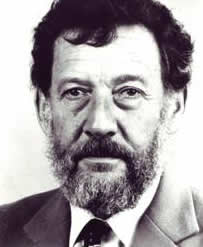
Photograph from the Department of Surgery at the QEH. Lou Opit grew his beard after leaving Adelaide where he was beardless.
Dr. Michael Hamilton’s photographs:
Dining with a friend and sister at the Ritz in London
Lou Opit and a friendDr. Rose’s photographs
Whilst at Monash Lou Opit was keen to liaise with the Royal Australian College of General Practitioners. Dr. Rose was a prominent member of the College and they became good friends. Here he is playing tennis at Dr. Rose’s home in Port Phillip Bay Dr. Rose was a keen sailor as was Lou, who was a proficient sailor but not in dinghies. On his first attempt in this craft, with his wife Gwen as crew, they capsized within meters of the shore.
Lou Opit next to his wife Gwen (extreme left) with a group of Community Medicine(CM) practitioners at Dr. Rose’s home. Dr. Neil Carson the Professor of CM is 4 th from left, Dr.Rose’s wife Betty and Dr John Summons are on the far right.
Opit and his wife GwenAppendix 1: Records from the Melbourne Chevra Kadisha, kindly provided by Shaya Weinstock.
Appendix 2: Page 3 from Lou Opit’s curriculum vitae, kindly provided by Dr. Michael Hamilton
List of publications provided by Professor Basil S. Hetzel, which stimulated Lou Opit’s interest in biochemistry and led to the Nature publication.(1965;208 (5009):471-4.
Good BF, Hetzel BS and Opit LJ. Effects of salicylate on protein bound iodine in thyroxine maintained thyroidectomised rats. J Endo. 21:p 231, (1960)
Charnock JS, Opit LJ and Hetzel BS. Electrolyte distribution in rats following salicylate. Metabolism 10: p874, (1961).
Charnock JS, Opit LJ and Hetzel BS. An evaluation of the effect of salicylate on oxidative phosphorylation in rat liver mitochondria. Biochem.J. 83 p602, (1962).
Charnock JS, Opit LJ and Hetzel BS. The effect of sodium salicylate on the ion and water content of isolated rat liver mitochondria. Biochem. J. 85: p190, (1962).
-o0o-
